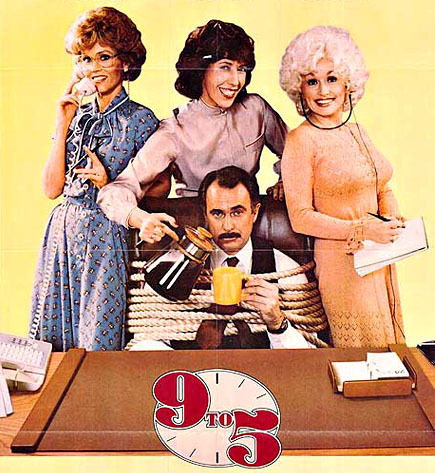A Plea For More Roseannes and Norma Raes: Addressing The Lack of Working-Class Female Characters on American Screens by Rachael Johnson
Working-class female protagonists remain rare, however. More often than not, working-class women play supporting roles as mothers, wives or lovers. Their characters are invariably underwritten or stereotypical.
The Power of Work/Life Balance in Charmed by Scarlett Harris
Insubordination and Feminism in Norma Rae by Amber Leab
A primary question about social fiction is whether the story remains relevant, or if the sociopolitical situation remains mired in the past. Norma Rae does retain relevance, though she’d likely be working in Walmart today instead of a textile mill (as I watched, I wondered how many textile mills still operate in the U.S.). While the movie seems to be a window on a past time in working America, it’s still relevant—and progressive—on many levels.
Moms Mabley and The Hard Work of Show Business by Ren Jender
The Corporate Catfight in Working Girl by Chantelle Monique
Because Katharine steals Tess’s idea, we automatically pull for Tess, the lower-class underdog; consequently, we are forced to view Katharine, the upper-class princess, as the demonized, selfish boss, determined to achieve success no matter what. Hurt, yet motivated to take control of her career, Tess is now forced to lie in order to have her voice heard. This causes her to be pitted against a boss who has clearly abused her power. Even though Working Girl seems like a harmless, romantic drama, its female representation is firmly rooted in classism and sexism.
9 to 5: Still a Fantasy by Leigh Kolb
“Hey we’ve come this far, haven’t we? This is just the beginning.”
The beginning was in 1980, when this feminist comedy classic was released. Dolly Parton belted out the title song, which features a “boss man” who is “out to get her”–it’s an uplifting song, though, that echoes the closing celebratory sentiment: this is just the beginning. Things are going to change.
Well how have we done in 34 years?
The Devil in The Devil Wears Prada by Amanda Civitello
Our contempt for Miranda Priestly is due, in large part, to the way the film contextualizes her decisions, not just her personality. In making her into a shrill caricature of a woman executive whose single-minded focus on her career ruins her personal life, the film, like so many others, shortchanges the potential of a character like Miranda.
Women, Professional Ambition, and Grey’s Anatomy by Erin K. O’Neill
It is the overwhelming drive for excellence that makes the women on the show so real. It sometimes feels that this kind of ambition is not allowed to exist on TV. Sure, women can have high-powered careers and be very successful. But this is different. This is a show that not just portrays ambitious women, but is actively about professionally ambitious women and how they relate to each other and society.
Working Women in Film by Amber Leab
Women of color who are workers don’t weigh heavily in the American cultural imagination. When women of color appear in films, they tend to be secondary characters in low-paying jobs. Rarely do we see movies about working women who happen to be women of color.
Jessica, Rachel, and Donna are all women working in a male-dominated industry. Jessica has overcome the sexism in the workforce by out-thinking it and by dominating the competition. Rachel has chosen to forego any help from her father, in favor of trying (and failing) on her own. And Donna has seen the patriarchal systems of power, and used them to her own advantage.
Working Class Family With a Touch of Absurdity: Raising Hope by Elizabeth Kiy
TV families are generally presented as aspirational. They usually live an upper middle class livestyle and frequently live comfortably on a single salary, have college degrees and wealthy backgrounds.
Usually when characters work menial labor or minimum wage jobs, they are presented as being in a transitory period. This is the stage before the character gets their life together, when the artist waits for a big break or where a youth supplements their allowance with their earnings. It’s rare that this work is presented as the character’s real life, how it will likely always be.

1 thought on “Women and Work/Labor Issues: The Roundup”
Comments are closed.